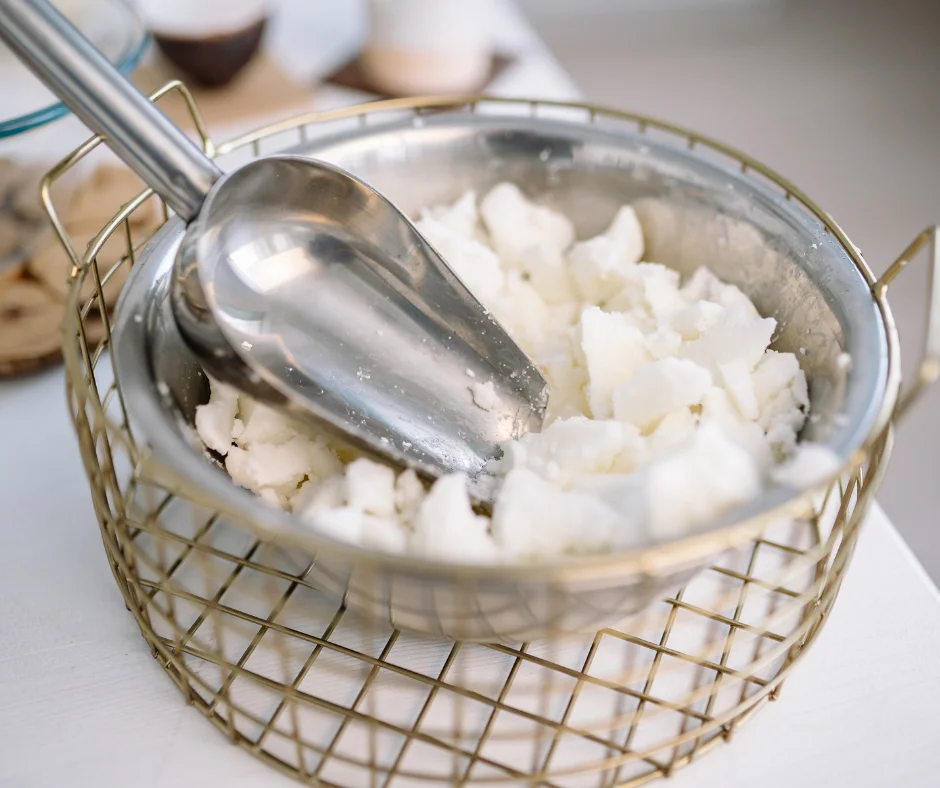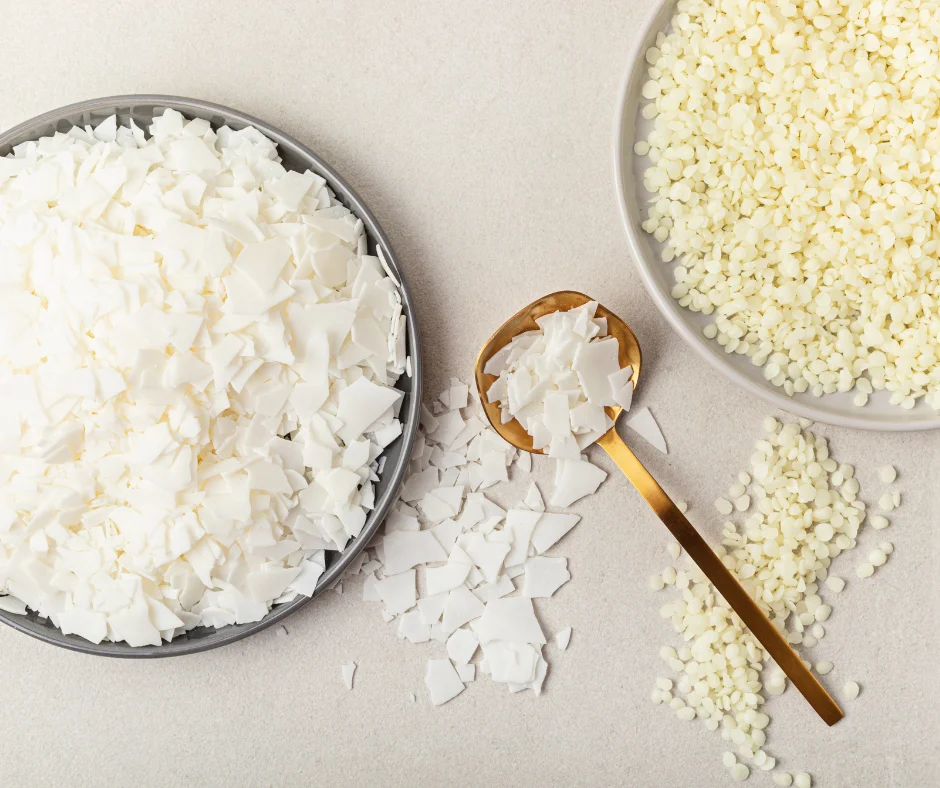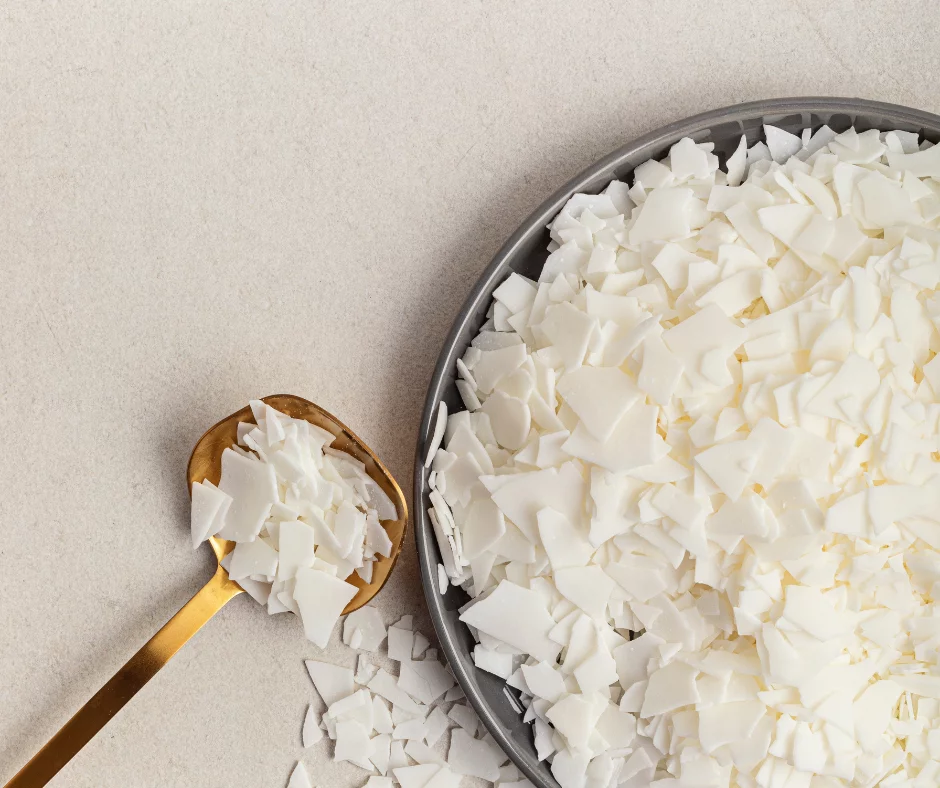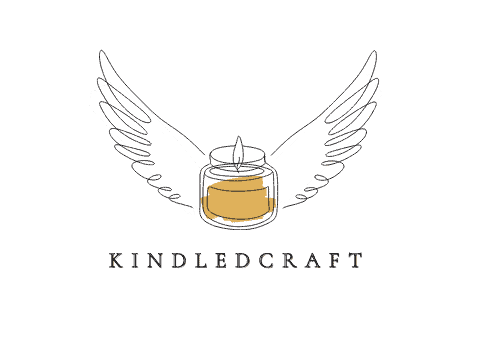A candle is a simple object, but the process of making one is surprisingly complex when choosing the correct wax blend. The first step in creating a candle is choosing the right wax blend for your project. This may include selecting a pre-bought wax mix or mixing different types of wax to create a unique formula that will produce the desired results. In this guide, you will learn about the different types of waxes used for candles and some tips and tricks for mixing them to create your own unique blends.

Can you mix different types of candle wax?
You can mix different types of candle wax together. Many candlemakers find that mixing different waxes together can create a unique blend with improved properties. For example, adding a small amount of paraffin to a soy wax blend can help increase the candles’ stability and longevity.
What do you need to consider when choosing your wax?
There are a few things you need to consider when choosing your wax blend:
- The type of candle you want to make (e.g., pillar, taper, tea light, etc.).
- The fragrance you want your candle to have.
- The colour you want your candle to be.
- The burning properties you desire (e.g., long burning, slow-melting, etc.)
- The sustainability of your candle wax.
- The budget that you have to spend on the wax for your candles.
What are the different types of candle wax?
Many different types of waxes can be used for candles, each with its own unique properties. The most common candle-making waxes are paraffin, soy, beeswax, and palm wax.
- Paraffin wax is a petroleum-based wax that is the most common type of wax used in candle making. It is inexpensive and has a high melting point, which makes it ideal for use in candles.
- Soy wax is a vegetable-based wax that is becoming increasingly popular among candle makers. It is eco-friendly and burns cleaner than paraffin wax. Soy wax also has a lower melting point than paraffin wax, which is ideal for container candles.
- Beeswax is a natural wax produced by bees. It is the most expensive wax used in candle making, but it burns clean and slowly. Beeswax is often used in combination with other types of waxes to improve the burning qualities of the candle.

- Palm wax is a natural wax made from the leaves of palm trees. It has a high melting point and produces a beautiful, glossy finish on candles. Palm wax is often used in combination with other types of waxes to improve the burning qualities of the candle.
- Coconut wax is a natural wax made from the pulp of coconuts. It has a creamy texture and a tropical scent. Coconut wax is often used in combination with other types of waxes to improve the burning qualities of the candle.
- Rapeseed wax is a natural wax made from the seeds of rapeseed plants. It is a hard wax with a high melting point. Rapeseed wax is often used in combination with other types of waxes to improve the burning qualities of the candle.
Now that you know about the different types of waxes used in candle making, you can begin to mix them together to create your unique blends.
What are the properties of different candle waxes?
All waxes are not made equal. Different waxes have different properties that will affect your candle in different ways. The table below outlines the most common waxes used in candle making and their fundamental properties.
| Properties | ||||
| Candle Wax | Soft (1) or Hard (10) | High (10) or Low (1) Cost | Melting Point (°F) | Finish |
| Paraffin | 5 | 2 | 115 to 154 | White, Translucent, Smooth |
| Soy | 4 | 4 | 144 to 149 | Creamy, Smooth |
| Beeswax | 6 | 7 | 120 to 180 | Yellow, Honey, Velvet |
| Coconut | 1 | 9 | 126 to 130 | Soft, Creamy, White |
| Palm | 8 | 7 | 100 to 107 | White, Smooth |
| Rapeseed | 8 | 4 | 180 | Creamy, Smooth |
| Properties | ||||
| Candle Wax | Strong (10) or Weak Hot Throw (1) | Fragrance Oil Blending Ease | Sculpture | Burn Time |
| Paraffin | 10 | 9 | 8 | 8 |
| Soy | 7 | 8 | 6 | 6 |
| Beeswax | 4 | 3 | 7 | 7 |
| Coconut | 8 | 6 | 3 | 7 |
| Palm | 9 | 8 | 9 | 9 |
| Rapeseed | 8 | 8 | 9 | 9 |
| Properties | |
| Candle Wax | Common Issues |
| Paraffin | Possible health concerns |
| Soy | Frosting, Lumpy Tops, Sinking |
| Beeswax | Ethical Issues, Expensive |
| Coconut | Sourcing Concerns, Low melting Point, Limited Applications |
| Palm | Expensive, Unethical Labour Practices |
| Rapeseed | Sinking, Availability based on location |
What happens to your wax when you add different candle waxes?
The table below shows what you can expect when combining two different types of wax. Many other factors can influence the properties of your candle, so it is essential to test combinations and ratios of waxes to gain the right balance.
| Type of Wax (Pure) | Advantage To Adding The Wax to Your Candle Wax Blend |
| Paraffin Wax | – Inexpensive. – High melting point. – Can create large, even complex candle shapes. – Bonds well with fragrance oils. – Increase hot and cold throw. – Decrease your candles price. |
| Beeswax | – Natural wax. – Burns clean and slow. – Expensive. – Can be used to improve the burning qualities of other waxes. – Sustainable Source, Boost Fragrance Oil Synergise. – Provides a natural honey scent to your wax blend. – Provide a unique and natural honey colour to your candle. |
| Soy Wax | – Eco friendly. – Burns cleaner than paraffin wax. – Lower melting point than paraffin wax. – Ideal for container candles. – Bonds well with fragrance oils. – Boost Fragrance of your candle wax blend. – Brings sustainable authority to your candle. |
| Rapeseed Wax | – Natural wax. – Hard wax. – High melting point. – Can be used to improve the burning qualities of other waxes. – Will increase the melting point of your wax blend. |
| Coconut Wax | – Natural wax. – Creamy texture. – Tropical scent. – Can be used to improve the burning qualities of other waxes. |
| Palm Wax | – Natural wax. – High melting point. – Produces glossy finish on candles. – Can be used to improve the burning qualities of other waxes. – Will increase the melting point of your wax blend. |
Choosing the Right Wax Blend
The wax you choose for your candle depends on various factors, such as the desired scent, colour, and texture. If you are looking for a robust and bold fragrance, palm or paraffin wax is a good choice.
Soy wax is a better option if you want a more subtle scent. The wax you use can also affect the colour of your candle. Paraffin wax will produce a white or off-white coloured candle, while soy wax can create anything from a pale yellow to a dark brown candle.
The texture of your candle will also be determined by the wax you use. Soy wax candles are softer and more pliable than those made with paraffin wax. Palm wax candles are the most complex type, while those made with beeswax are a close second.
When choosing the right wax blend, it is essential to experiment and find what works best for you. Try out different combinations of waxes until you find the perfect mix for your candles.

Preparing your waxes for testing
Now that you know about the different types of waxes and their properties, you can begin mixing them together to create your unique blends. Here are some tips for making your candle wax blends:
- Start by choosing one type of wax as your base. This can be any wax, but selecting a wax with a high melting point is typically best.
- Add in another type of wax to create the desired effect. For example, if your candles have a strong fragrance, you may want to add beeswax to your blend.
- Experiment with different ratios of waxes until you find a blend that you like.
- Keep in mind that the ratio of waxes will affect the properties of your candles. For example, more beeswax will make your candles burn slower.
- Be creative and have fun! There is no right or wrong way to mix waxes together. The only limit is your imagination!

How to Mix Different Candle Waxes?
Once you have chosen the waxes you want to use, it is time to start mixing them. The first step is to melt the waxes in a double boiler or crock pot. If you use a crock pot, set it to the lowest heat, so the wax does not burn.
If you want to know more about wax temperatures and how to get the most out of your candles through temperature management – check out our article!
Once the waxes are melted, it is time to start mixing them together. You can use a spoon, spatula, or whisk to mix the waxes together. Stir the waxes until they are thoroughly combined.
Once the waxes are combined, you can add any fragrance, colour, or other additives you want to use. Stir the waxes until the additives are thoroughly combined.
Finally, pour the wax mixture into moulds or containers and allow it to cool and harden. You can either set these aside for future candles or pour the wax directly into your candle mould.
Finishing your candle
If you want to bag and produce your own wax, take the wax you have set to the side and break the hardened wax into shards. This can then be placed in bags as a new wax blend to sell to your customers. Make sure that you test your unique wax blends to ensure that you get the best hot throw, aesthetics, and burn quality possible.
This will take time, so be patient. Test, test, and test even more – you will continue to find new ways to make your wax mixes the best they can be!
Mixing Different Types of Wax
Once you have chosen the wax you would like to use for your candle, you can begin to mix different types to create a unique blend. Keeping your candle’s desired outcome in mind is essential when combining different types of waxes. For example, if you are looking for a softer candle, you will want to use a higher ratio of soy wax to beeswax. If you are looking for a harder candle, you will want to use a higher percentage of beeswax than soy wax. To create a unique candle, add other ingredients to your wax blends, such as fragrances or colourants.
Tips and Tricks for Working with Wax
Working with wax can be a bit tricky, but there are a few things you can do to make the process easier. First, ensure the area you are working in is well-ventilated to avoid inhaling any fumes. Second, wear gloves and a mask to protect yourself from potential health hazards if you use paraffin wax. Finally, if you are having trouble getting the desired results when working with soy wax or beeswax, try melting the waxes together before adding them to your project. This will help the waxes to bind together more efficiently and give you a smoother finish.
Wax Blending Frequently Asked Questions?
How much beeswax do I mix with soy wax?
The ratio of beeswax to soy wax will depend on the desired outcome of your candle. For a softer candle, use a higher percentage of soy wax. For a harder candle, use a higher percentage of beeswax.
Can you mix beeswax and soy wax for pillar candles?
Yes, you can mix beeswax and soy wax to create pillar candles. The ratio of beeswax to soy wax will determine the hardness or softness of your candle. The ratio will also impact the honey scent from the beeswax and the melting point of the candle. This will usually increase the more beeswax you add.
Can I mix wax melts with soy wax?
Wax melts can be mixed with soy wax to create a unique candle. The ratio of wax melts to soy wax will determine the hardness or softness of your candle. The ratio will also impact the fragrance throw of your candle. This will usually increase the more wax melts you add.
Final Thoughts
Now that you know more about the different types of waxes available and how to mix them together, you can create your unique blends to use in your next candle-making project! Let your creativity run wild and experiment with a different scent, colour, and texture combinations to see what you can come up with.


